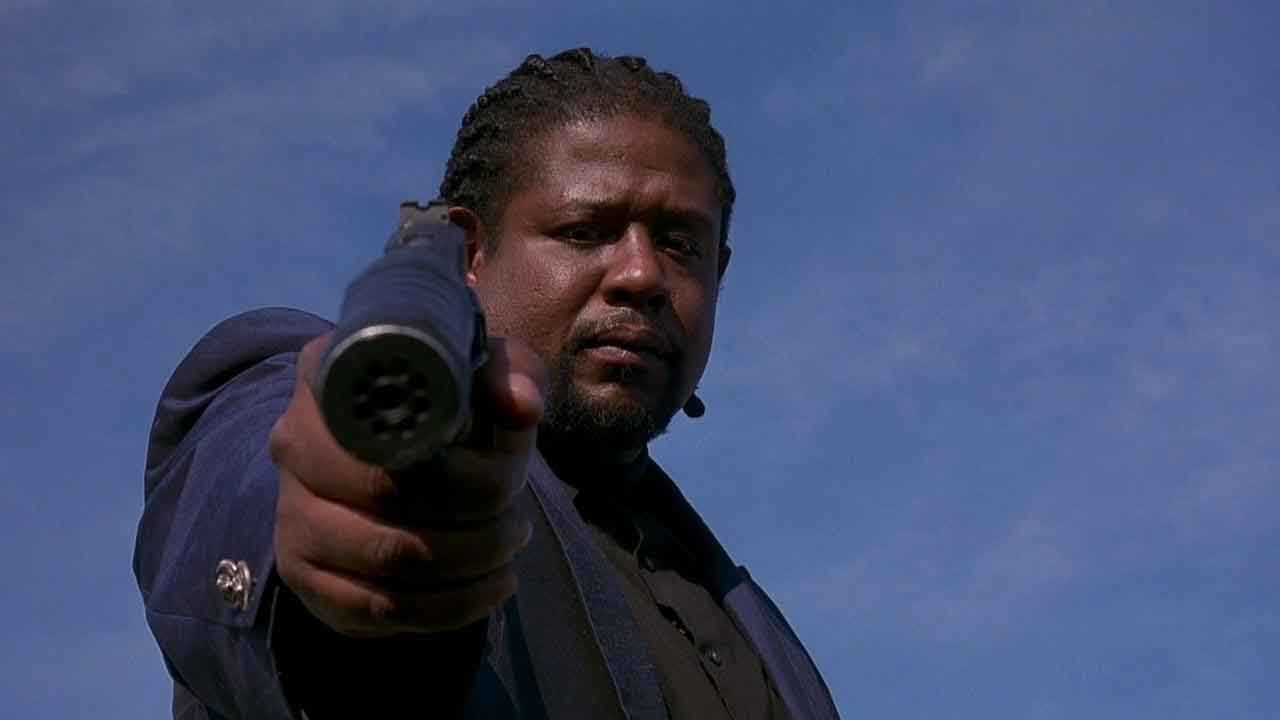
The hitman as perfectionist, as ardent professional is a much loved trope in crime fiction and film. Often these characters, even when appearing in only minor antagonistic roles make some of the strongest impressions within a given work, like Max Von Sydow’s ultra-pragmatic Joubert from the 1975 Three Days of Condor, an assassin who, working for the same agency out to get Robert Redford’s Condor spares him when he has a chance to kill him – it isn’t called for, he hasn’t a contract specifically out on him.
Joubert’s modus operandi is simple: “I don’t interest myself in why, more in when, sometimes where, always how much.” Unlike the Condor, caught up in a deadly game for his ideals, Joubert finds a peace of mind in his mercenary existence. “No need to believe in either side or any side. There is no cause. Only yourself. The belief is in your own precision.” Joubert’s concerns are limited only to that which is within his power – his conduct. In a world of chaos and ambiguity he lives by the simple rules of the trade.
And this is the spirit embodied by Alain Delon’s protagonist in Jean-Pierre Melville’s 1967 Le Samourai. Opening on a (falsified) quote from the Bushido (feudal Japan’s samurai code of ethics) comparing the samurai’s loneliness to that of the tiger the film places the archetype of the hitman within the tradition of the philosopher-warrior and makes of their moral detachment a kind of stoic virtue and existential position. The commitment to the role as a dissolution of self into object – Sartre’s being-for-itself become the in-itself. It presents the killer not as a gruff and gangsterish figure, but a taciturn, ascetic loner. In his silence Jef becomes for the audience a dual image – both the most intimate of audience surrogates – identified completely with his actions in the world, practically a first person narrator – and as an impossibly removed enigma, a character who, in his lack of psychology, offers no internal self at all, and can be as little considered in terms of motivation as emotion.
Following the international acclaim of Le Samourai this trope will begin to emerge more and more often, frequently in a leading role, and regularly referring directly back to Melville’s watershed film. Frequently films have borrowed not only character and theme but elements of plot and structure: the car theft, the murder, the rival detective, the sympathetic woman, the police line, the traitorous employer, and the revenge mission.
What these films also share is a slower pace than usual for the crime-thriller, an emphasis on atmosphere, procedure and technique, and, in the strange perspective of their protagonists, an invitation to general formal experimentation not usually found within the genre’s focus on a straightforward realism to convey its subject matter – producing many staples of what is now referred to as the arthouse-thriller.
1. Le Samourai (1967)
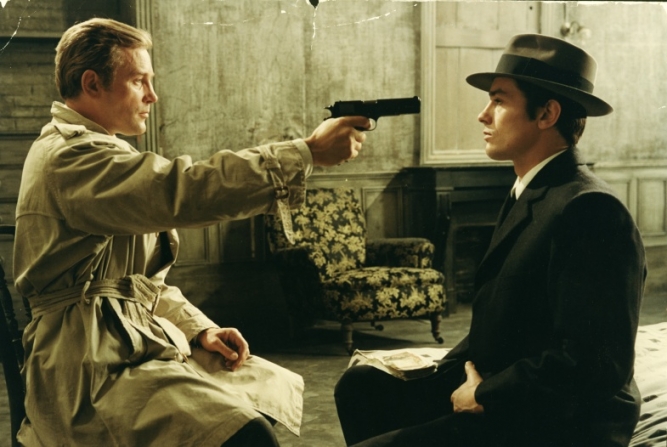
For director Jean-Pierre Melville Le Samourai was a kind of revelation within his own filmmaking which would leave its mark on the remainder of his work leading up to his death in 1973. A progressive quieting of his protagonists away from the gregarious narration of Bob The Gambler toward the near silence of his professionals in Army of Shadows, The Red Circle, and A Cop, two of three also starring Alain Delon.
The film follows Delon’s Jef, an independent hitman working 1960’s Paris with the invulnerability and invisibility of a ghost. The film opens on a long segment without dialogue as we observe Jef methodically prepare for a hit set for that night, building his alibi by making appearances across town, stealing a car, having the plates changed and acquiring a gun from an associate with whom he need not even exchange words. Jef has been hired to kill Marty, the owner of an upscale jazz-club for reasons he neither knows nor cares to know. For his airtight alibi and unassuming confidence he is able to walk right into the club and into Marty’s office, kill him and walk out, without being seen by any witnesses save for the club pianist Valerie (Cathy Rosier) who for unknown reasons fails to identify him.
François Périer plays opposite Delon as his rival in the law, a man of no less competence but nowhere near the same reserve. The man assigned to Marty’s murder he takes his mission personally, Jef in his ability to cheat the law appearing something like an affront to the law’s very moral fabric. And as Jef is called in to a police line and questioning which he anyways beats, his employer (Jean-Pierre Posier) decides he has become a liability, and sends an agent (Jacques Leroy) to eliminate him when Jef goes to receive his payment.
Now hunted by both the police – who bug his apartment and conduct a surveillance operation to track his movements across the city – and his employers, Jef’s mission becomes one of survival and revenge, and takes him back to the club to see Valerie, who he believes may be more involved than she lets on.
Le Samourai is both a meticulously paced procedural of murder and cover-up and a city-wide cat and mouse game cutting between Jef and the cops and his employers (who increasingly resemble one another), each move deftly counteracting the last, remarkable for its minimalist style and memorable for Delon’s icy performance.
2. Point Blank (1967)
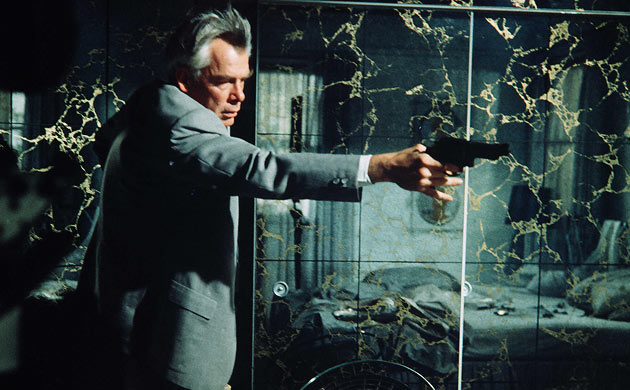
John Boorman’s Point Blank came out the same year as Le Samourai (there is no evidence director John Boorman ever saw Melville’s movie or vice versa) and yet there are striking similarities, not only in the arthouse-thriller form and structure, but even down to inexplicably mirroring shots of the protagonists trodding long white painting-hung halls toward their targets. But this is not to call them the same film.
First Point Blank is an American film, in the very same way as Le Samourai is French. Though reminiscent of the British revenge-thriller Get Carter and from British director John Boorman its script from Richard Stark’s hardboiled novel The Hunter and Lee Marvin’s portrayal of the protagonist Walker are quintessentially American – blunt and materialistic, bound only to the code of capitalist exchange. Walker is not a man concerned with honor, nor one consumed by revenge. Walker only wants what he is owed. Walker wants his $93,000.
Telling the (seemingly) simple narrative in a profoundly unsimple way, Point Blank follows a job on Alcatraz island, where Walker and his associate Mal Reese (John Vernon) hit a drop of mob money, killing both the bagmen, before Walker is betrayed, shot, and left for dead in an empty cell by Reese who makes off with his money (his $93,000). As if supernaturally aided Walker somehow escapes – it is never explicitly stated how – and makes his way back to the mainland, where with the help of a government agent Yost (Keenan Wynn) and his sister-in-law Chris (Angie Dickinson) he orchestrates a grand plan of attack against Reese, who has, since stealing Walker’s money and wife also found his way into high position within a seemingly omniscient crime-syndicate behind as much of the LA underworld as police.
Without having to fire his gun on anyone Walker uses his wits and (sometimes his bare hands) to infiltrate the syndicate’s highest reaches, – indirectly causing the death of several syndicate members along the way – in search of Reese and his $93,000 dollars.
3. Blast of Silence (1961)
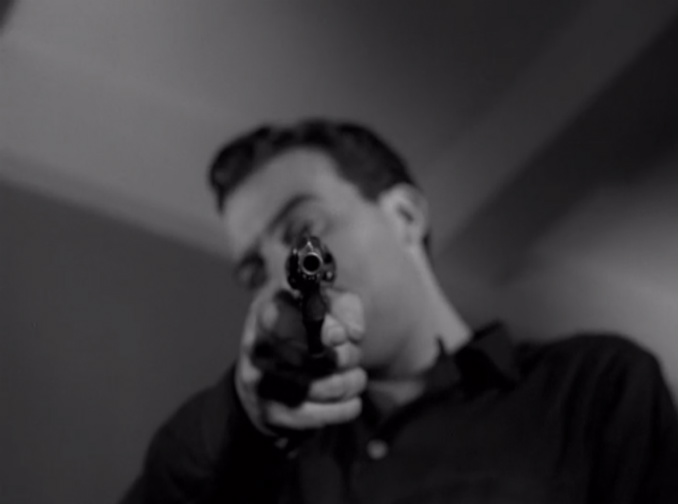
1961’s Blast of Silence, prefiguring both the aforementioned films shows the origins of Le Samourai-type character pre-existing Melville’s film, even if coming to become identified with it.
Blast of Silence is the best-remembered film of television director Allen Baron, who wrote, directed, and starred in it. Low-budget, personal, and freeform, the film is narrated like a second person novel, somewhere between a down and dirty, hardboiled New York Pulp and a Jonas Mekas-type beatnik elegy. The hitman, (“you”,) Frankie Bono, is a misanthropic outsider and a class act hitman, come home to the neighborhood of his youth on a contract. It is the Christmas season and Frankie Bono looks on the revellers with contempt. Community, charity, celebration, signs of weakness to the hardened killer who can’t be bothered with the niceties of a social existence.
The film unfolds as a procedural of Frankie’s preparations, trailing his mark the businessman Troiano, finding the right place to hit him, and acquiring the necessary equipment, all while narrating the tricks of the trade and the philosophy of hired psychopath.
But it is the intrusions of Bono’s past life, here in his hometown, that threaten to undercut that professional philosophy. An old friend and associate Big Ralph (Shock Corridor’s Larry Tucker) ends up causing problems for him, and a childhood sweetheart Lori (Molly McCarthy) threatens to reveal a more emotional and even human side of the killer that would undermine his working detachment and the sense of superiority he claims over the lives of others.
4. The Driver (1978)
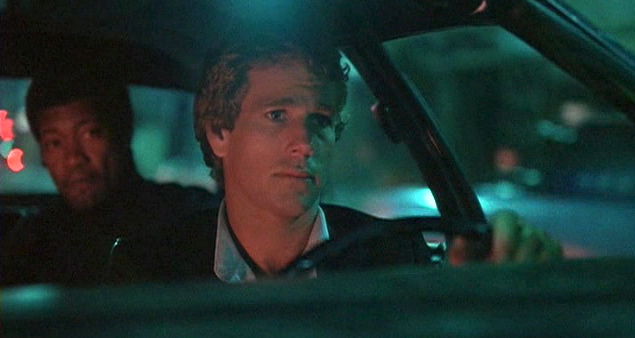
From director Walter Hill The Driver is a merger of Le Samourai’s moody existentialism with the American car chase films like Bullit (1968) and The French Connection (1971). Ryan O’Neale plays the titular driver, a mostly silent best in town getaway driver for hire known to the cops as ‘The Cowboy’ and entered into a series of double crossings when his rival in the somewhat buffoonish detective played by Bruce Dern tries to get to him through a gang of bank robbers who have plans of their own.
Lifted straight from Le Samourai, at least initially, comes Isabelle Adjani’s character, a gambler and one of a handful of witnesses to the driver’s participation in a casino job which, brought to the police lineup, she vehemently denies – expecting in turn, a payoff from the driver, and meanwhile beginning to be hounded by Dern’s detective who is certain she must be in touch with Cowboy.
Built around its elaborate driving scenes in which O’Neale nimbly evades cops and chases baddies down through backstreets, alleyways, and crowded industrial yards, it also explores an implicit culture of getaway drivers – past associates the driver has worked two car jobs with, pros and rank amateurs, all flash and attitude in their driving and choice of cars which the driver in his own unassuming rides can easily outrace.
The Driver marks a branching for the influence of Le Samourai away from the figure of the hitman – which is throughout the 70’s translated more directly into The Mechanic (1972) and The Day of The Jackal (1973) – to the figure of the driver by way of the same reserve and code of ethics, and would become in its own way highly influential on films like Drive (2011) and through that Edgar Wright’s Baby Driver (2017) among others.
5. The Conversation (1970)
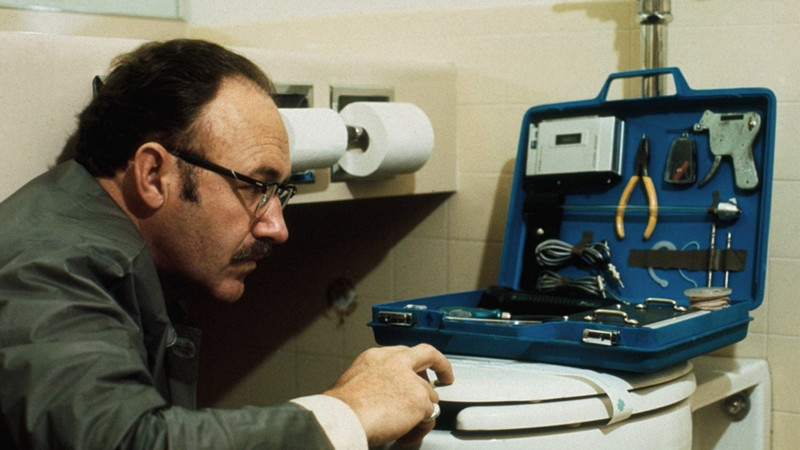
Like a variation on the accidental witness theme of Michelangelo Antonioni’s Blow-Up that furnishes it with the high tension it deserves, Francis Ford Coppola’s masterpiece of suspense The Conversation follows Gene Hackman’s Harry Caul, a lonely and paranoid surveillance contractor responsible for the bugging and recording of conversations who believes he has chanced upon a murder plot within his work and feels the responsibility to prevent it.
Caul is more at home with his equipment than people, his only relationship being with a woman (Teri Garr) who he abandons when she begins asking too many questions about his line of work and irrationally fearing she may somehow be involved in a case. Troubled by the many strictures of his Catholicism and the moral contradictions of his job and the world at large, Caul keeps himself to certain tenants of conduct he batters his partner with (John Cazale) not to become personally involved with his work – a rule Caul immediately breaks as the film begins and he becomes obsessed with the young couple (Cindy Williams & Frederic Forrest) he has been hired by an unforthcoming and potentially murderous executive (Robert Duvall) to eavesdrop on.
With a gearhead’s attention to analogue detail – the film famously using much of the same equipment used by Nixon associates in the Watergate scandal – and an obsessive’s attention to the meaning of gestures and words, The Conversation follows Harry Caul’s fall from professional grace as he replays the couple’s conversation over and over on tape looking for hidden meaning and eventually trying to stop a murder he believes is in progress.